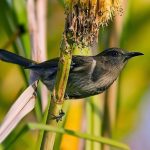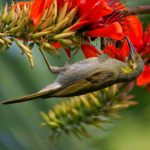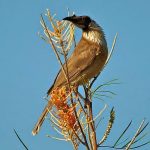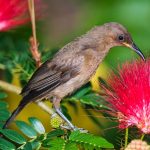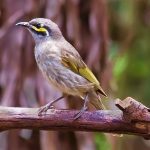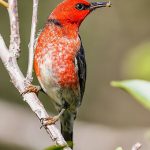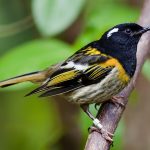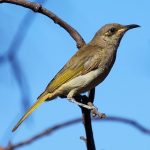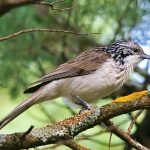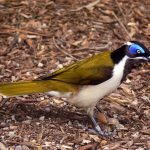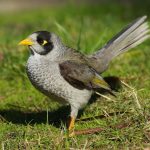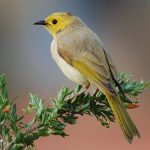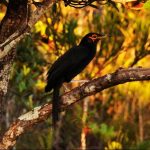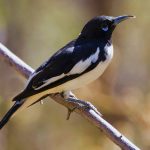White-naped honeyeater
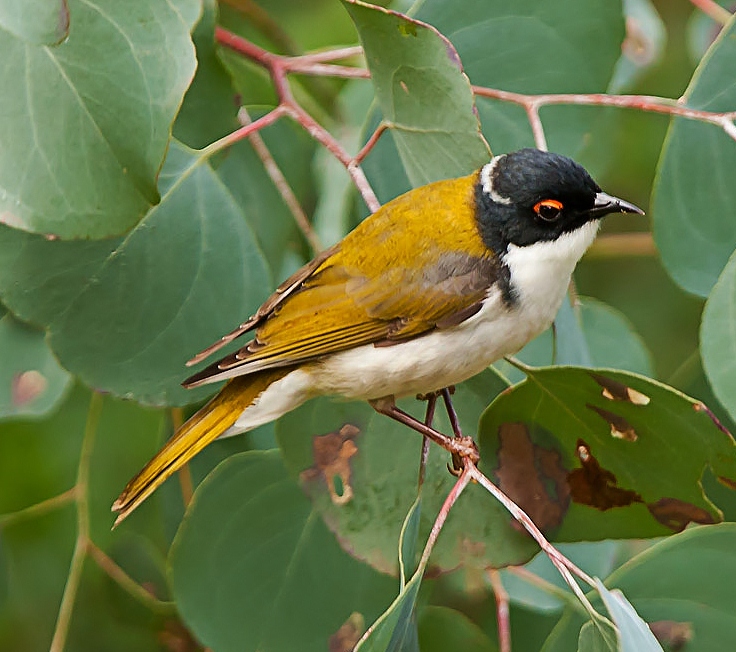
 |
| Photo by Russell Cockman (Russell’s Astronomy) |
Common name:
white-naped honeyeater (en); melífago-de-nuca-branca (pt); méliphage à lunule (fr); mielero nuquiblanco (es); mondstreif-honigschmecker (de)
Taxonomy:
Order Passeriformes
Family Meliphagidae
Range:
This species is endemic to Australia, occurring in two disjunct populations, one in the eastern and south-eastern parts of the country, from northern Queensland to eastern South Australia, and another in the south-western corner of the country.
Size:
The white-naped honeyeater is 13-15 cm long and weighs around 13 g.
Habitat:
These birds are found in temperate forests and woodlands, but also in dry savannas, dry scrublands, plantations and urban parks and gardens.
Diet:
They mostly eat the nectar of a wide range of flowers, but also manna, insects and insect products such as honeydew and lerp.
Breeding:
White-naped honeyeaters can breed all year round, but mostly in September-November. They breed communally, with both the parents and helpers looking after the young, although only the female incubates the eggs. The female builds a small open cup nest made of grass, bark and spider webs, placed high up in a tall tree, usually Eucalyptus. She lays 2-3 shiny buff-pink eggs with red-brown spots, which she incubates alone for 14 days. The chicks fledge 14-15 days after hatching. Each pair raises 1-2 broods per year.
Conservation:
IUCN status – LC (Least Concern)
This species has a very large breeding range and is described as common. The population is suspected to be stable in the absence of evidence for any declines or substantial threats.
